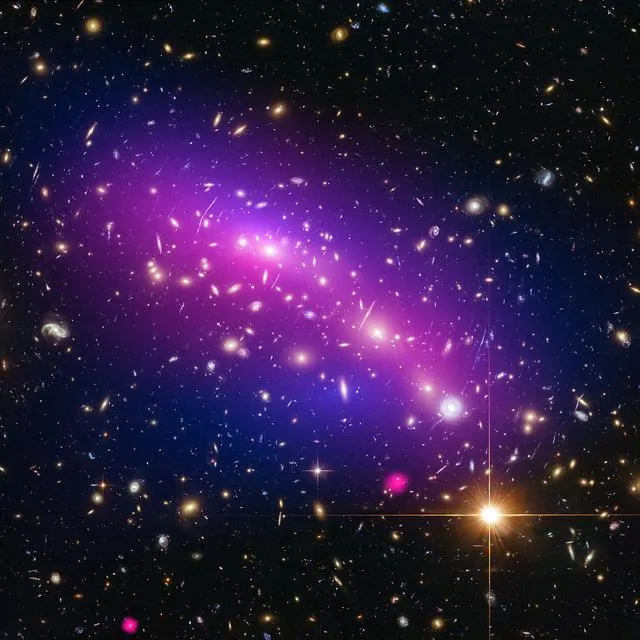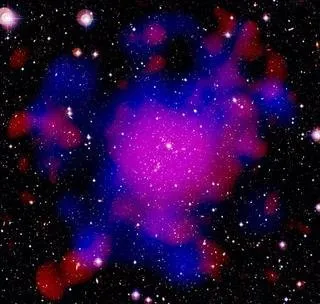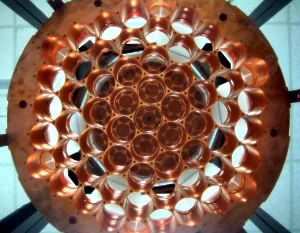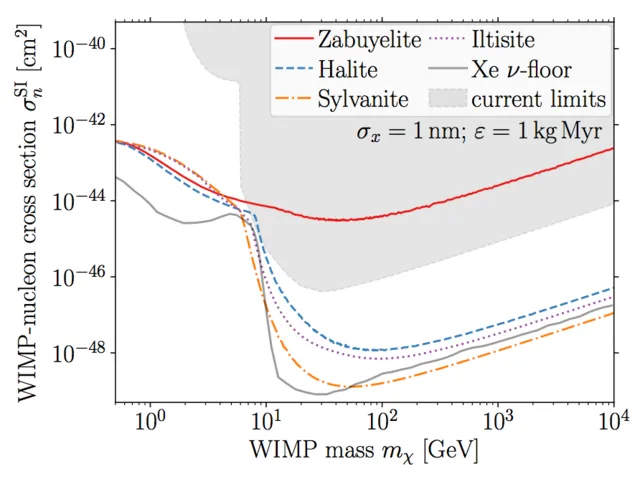Identifying the nature of dark matter consists in one of the highest priority of particle physics today. Many different classes of experiments have consequently been built with this sole aim in mind.

[image credits: Smithsonian (public domain)]
Even if it is very elusive, dark matter can be directly observed in a detector placed on Earth.
By direct detection, I really mean it: I consider the detection of a dark matter particle hitting a detector and leaving a track inside it, such a track being measurable.
Many experiments have been built along this principle.
Although those experiments are doing extremely well, not a single dark matter particle has been observed today. Consequently strong constraints on dark matter can be derived from data.
Many viable options are nevertheless still viable, and all constraints can be accommodated in most concrete models.
A couple of weeks ago, an interesting research article have been released on the arXiv. It has shown that searching for hints of dark matter into million-year-old stones could yield better results than any state-of-the-art experiment.
DARK MATTER IN A NUTSHELL
The first question to address consists in the reason why most particle physicists bother about dark matter. It is pretty simple. If we take all cosmological data available today, we have (indirect) evidence that most matter is invisible.
In other words, one needs dark matter to make cosmological observations matching theory.
This being said, it is also possible to change the theory and get rid of dark matter. We could for instance modify how gravity works. However, the significance that we get at the end of the day is not as strong as with dark matter.

[image credits: ESA]
For this reason, I personally prefer the dark matter paradigm. Other researchers nevertheless investigate alternatives. What matters is to ensure that there is no potential loophole in the searches.
Cosmological data thus indirectly provides evidence that matter is mainly of an unknown nature.
But what is the definition of dark matter? Actually, its name is well chosen. Dark matter contains the two words ‘dark’ and ‘matter’.
Dark matter is dark because it does not interact electromagnetically. Knowing that the particle responsible for mediating the electromagnetic interactions is the photon, or the particle of light, I guess it is easy to connect the dots.
Moreover, dark matter behaves gravitationally as normal matter. Therefore, dark matter is a kind of matter too. Once again, easy to connect the dots.
DARK MATTER DIRECT DETECTION
As said in the beginning of this post, dark matter direct detection experiments aim to observe dark matter when it travel through Earth. They rely on the fact that dark matter can potentially interact with the material of a detector when it goes through it, and thus be observed.

[image credits: LUX]
Of course, the probability with which a dark matter particle going through Earth would interact with anything is tiny.
There is however one way out, which consists in building a very large detector to maximize the chances of observing anything.
An example of such is shown on the picture on the left. The detector is full of material which dark matter can interact with, and surrounded by electronics allowing to record what is going on.
Whilst in most cases dark matter will just go through the detector undisturbed, once in a while it hits an atomic nucleus from the detector material.
The recoil of the nucleus can be observed and the properties of this recoil can be measured. This offers a way to detect dark matter. The caveat is as usual the background, coming mostly from electronic recoils and neutron contamination. However, it can be at the end of the day controlled.
As dark matter direct detection experiments have not been able to observe any dark matter particle up to now, we can interpret the results under the form of constraints on dark matter models.
In particular, the interaction rate of dark matter with the nucleus is more and more constrained. It must indeed be small enough to guarantee the fact that the dark matter direct detector experiments do not observe anything. Taking all data into account, we are however still far from a complete exclusion of dark matter.
PALEO-DETECTORS
In this scientific article that appeared a couple of weeks ago, a group of researchers have introduced a new tool to search for dark matter. The idea is to move away from standard dark matter direct detection experiments. I recall that the latter must be built from a huge amount of very pure material to ensure a large enough detection probability, and well shielded to be able to control background.
The authors of the above paper proposed instead to use very ancient minerals as dark matter detectors. The heart of the proposal consists in investigating how these stones could contain a persistent chemical or structural change caused by a dark matter particle hitting one of the atomic nuclei of the stones.
Such a change could be observed, with a very good precision, through electron microscopy or atomic force microscopy, as well as with more recent 3D imaging technologies (using X-rays or ultraviolet light).
In order to reduce the background, there are once again constraints on the type of minerals that should be used. The authors have shown that a dark matter signal could be extracted from the background by relying on specific classes of minerals older than about 500 million years, also known as paleo-minerals. The four considered examples are Zabuyelite, Halite, Iltisite and Sylvanite.

[image credits: arXiv]
The results that are shown on the figure on the right have been obtained with a few grams of paleo-minerals.
The figure shows the constraints on the dark matter interaction rate with a nucleon (the y-axis) relatively to the dark matter mass (the x-axis).
The grey region is excluded by all direct dark matter experiments run up to now.
The four dashed lines depict how the grey zone would expand by probing each of the four minerals above-mentioned.
Comparing the grey zone to the position of the dashed lines, it is clear that dark matter models could be in a very critical shape thanks to this new method, the white zone being the region still allowed by data.
SUMMARY AND TAKE-HOME MESSAGES
I detailed a very recent research article proposing to search for dark matter in very old minerals known as paleo-minerals.
By using million-years-old minerals (Zabuyelite, Halite, Iltisite and Sylvanite) that are very easy to get in cores from ultra-deep boreholes, it has been shown that constraints on dark matter could be increased to a very large extent. In particular, the rate at which a generic dark matter particle could interact with normal matter could be constrained two or three times more stringently than what it is today.
This new method using rocks offers thus existing prospects for the future.
STEEMSTEM
SteemSTEM is a community-driven project that now runs on Steem for almost 2 years. We seek to build a community of science lovers and to make Steem a better place for Science Technology Engineering and Mathematics (STEM). In particular, we are now actively working in developing a science communication platform on Steem.
More information can be found on the @steemstem blog, in our discord server and in our last project report.